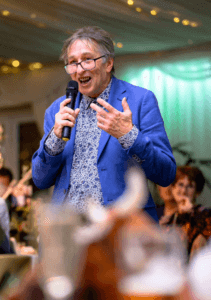SPOILER ALERT: Don’t continue until you’ve read at least the first two chapters of The Marathon Years — after you’ve finished the chapter called The Diagnosis.
+ + + + +
I’m not quite sure where this post belongs.
At first I planned to put it at the front of my book, The Marathon Years. It is, after all, the preface, explaining why I’m writing it, and why there’s such an odd juxtaposition between the first two chapters … is it a book about running or a book about dementia?
But if it comes first, there’s a problem. In those first two chapters I’ve tried to create a tension. Who’s been diagnosed with dementia — is it me or Lena? But if you read the preface first, I’ve given the game away. It’s clearly Lena.
So, for the moment, I’m keeping this introduction here in the blog, not adding it to The Marathon Years Chapter Index.
Maybe when it comes to the finished book, this will be neither a Preface or an Afterword, but a … Midface? … published immediately after The Diagnosis, when the truth is revealed. What do you think?
Anyway, here goes …
Alan
+ + + + +

Why this book? Why the title?
As our story begins, I’d already read a lot about dementia and Alzheimer’s, and my head was stuffed full of the facts. But nothing prepared me for the emotional impact of watching the person I loved decline, little by little, day by day. And I still had to figure out for myself how to deal with unanticipated problems — whether it was how to deal with shoelaces that had been knotted about a dozen times, or whether it was safe or moral or legal to lock Lena in the house when I went out for a run or to do the shopping.
I certainly don’t have all the answers — and this horrifying illness seems to affect people in many different ways. But after all these years, I’ve faced many of the issues that so many caregivers have to deal with. I felt that an honest book, from someone on the front line of care, might help others.
So why the title — The Marathon Years? Well, as I’ve often said, it’s thanks to running that I’ve been able to care for Lena for so long. I’ve needed the physical and mental strength that running has given me. But also our dementia journey has been just like the stages of a marathon:
- The Start-Line — You’re full of apprehension, you know it’s going to be tough, but you’re hoping for the best.
- Early Stages — It’s all going well, and you’re more confident. You can do this.
- Half-Way — Uh-oh, you’re beginning to tire and hurt. There’s still so far to go.
- The Wall — It seems impossible. Surely it can’t get worse.
- The Finish-Line — Finally, it’s over. So what’s next …?
And that’s the way my book will be structured, weaving between the two parallel stories.
But there’s a third thread to the book too. The love story. Finally, this book is for me. I’m writing our love story, as I always promised Lena I would. Dementia may have stolen her from me, but I refuse to let it bully my precious Lena memories out of me too. Weaving our good-time stories into the dementia narrative keeps her intact, and that means we win.

Here’s to love — and life!

